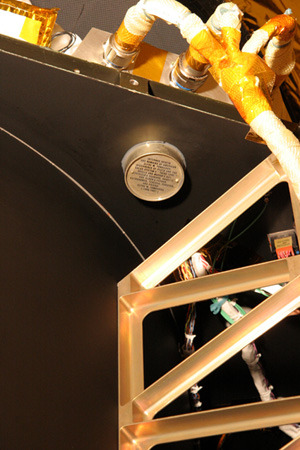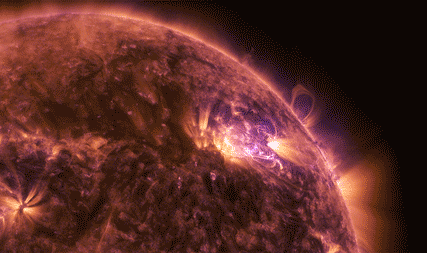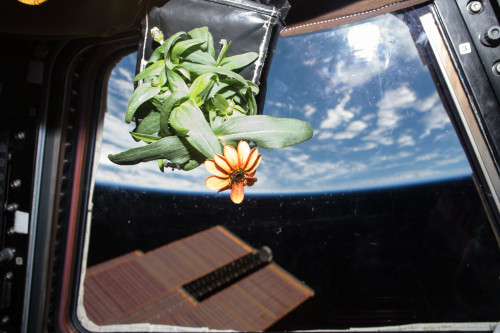How Big Is Our Galaxy, The Milky Way?
How Big is Our Galaxy, the Milky Way?
When we talk about the enormity of the cosmos, it’s easy to toss out big numbers – but far harder to wrap our minds around just how large, how far and how numerous celestial bodies like exoplanets – planets beyond our solar system – really are.
So. How big is our Milky Way Galaxy?
We use light-time to measure the vast distances of space.
It’s the distance that light travels in a specific period of time. Also: LIGHT IS FAST, nothing travels faster than light.

How far can light travel in one second? 186,000 miles. It might look even faster in metric: 300,000 kilometers in one second. See? FAST.

How far can light travel in one minute? 11,160,000 miles. We’re moving now! Light could go around the Earth a bit more than 448 times in one minute.

Speaking of Earth, how long does it take light from the Sun to reach our planet? 8.3 minutes. (It takes 43.2 minutes for sunlight to reach Jupiter, about 484 million miles away.) Light is fast, but the distances are VAST.

In an hour, light can travel 671 million miles. We’re still light-years from the nearest exoplanet, by the way. Proxima Centauri b is 4.2 light-years away. So… how far is a light-year? 5.8 TRILLION MILES.

A trip at light speed to the very edge of our solar system – the farthest reaches of the Oort Cloud, a collection of dormant comets way, WAY out there – would take about 1.87 years.
Our galaxy contains 100 to 400 billion stars and is about 100,000 light-years across!
One of the most distant exoplanets known to us in the Milky Way is Kepler-443b. Traveling at light speed, it would take 3,000 years to get there. Or 28 billion years, going 60 mph. So, you know, far.
SPACE IS BIG.

Read more here: go.nasa.gov/2FTyhgH
Make sure to follow us on Tumblr for your regular dose of space: http://nasa.tumblr.com.
More Posts from Nasa and Others

Curious about how to send research to the International Space Station or how to get involved with NASA missions as a college student? Ask our experts!
Through our Student Payload Opportunity with Citizen Science, or SPOCS, we’re funding five college teams to build experiments for the International Space Station. The students are currently building their experiments focusing on bacteria resistance or sustainability research. Soon, these experiments will head to space on a SpaceX cargo launch! University of Idaho SPOCS team lead Hannah Johnson and NASA STEM on Station activity manager Becky Kamas will be taking your questions in an Answer Time session on Thurs., June 3, from 12-1 p.m. EDT here on our Tumblr! Make sure to ask your question now by visiting http://nasa.tumblr.com/ask. Hannah Johnson recently graduated from the University of Idaho with a Bachelor of Science in Chemical Engineering. She is the team lead for the university’s SPOCS team, Vandal Voyagers I, designing an experiment to test bacteria-resistant polymers in microgravity. Becky Kamas is the activity manager for STEM on Station at our Johnson Space Center in Houston. She helps connect students and educators to the International Space Station through a variety of opportunities, similar to the ones that sparked her interest in working for NASA when she was a high school student. Student Payload Opportunity with Citizen Science Fun Facts:
Our scientists and engineers work with SPOCS students as mentors, and mission managers from Nanoracks help them prepare their experiments for operation aboard the space station.
The Vandal Voyagers I team has nine student members, six of whom just graduated from the Department of Chemical and Biological Engineering. Designing the experiment served as a senior capstone project.
The experiment tests polymer coatings on an aluminum 6061 substrate used for handles on the space station. These handles are used every day by astronauts to move throughout the space station and to hold themselves in place with their feet while they work.
The University of Idaho’s SPOCS project website includes regular project updates showing the process they followed while designing and testing the experiment.
Make sure to follow us on Tumblr for your regular dose of space: http://nasa.tumblr.com.
Going the Distance... In Space
On April 17, NASA's New Horizons crossed a rare deep-space milestone – 50 astronomical units from the Sun, or 50 times farther from the Sun than Earth is. New Horizons is just the fifth spacecraft to reach this great distance, following the legendary Voyagers 1 and 2 and Pioneers 10 and 11. It’s almost 5 billion miles (7.5 billion kilometers) away; a remote region where a signal radioed from NASA's largest antennas on Earth, even traveling at the speed of light, needs seven hours to reach the far-flung spacecraft.
To celebrate reaching 50 AU, the New Horizons team compiled a list of 50 facts about the mission. Here are just a few of them; you'll find the full collection at: http://pluto.jhuapl.edu/News-Center/Fifty-Facts.php.

New Horizons is the first – and so far, only – spacecraft to visit Pluto. New Horizons sped through the Pluto system on July 14, 2015, providing a history-making close-up view of the dwarf planet and its family of five moons.
New Horizons is carrying some of the ashes of Pluto’s discoverer, Clyde Tombaugh. In 1930, the amateur astronomer spotted Pluto in a series of telescope images at Lowell Observatory in Arizona, making him the first American to discover a planet.

The “Pluto Not Yet Explored” U.S. stamp that New Horizons carries holds the Guinness World Record for the farthest traveled postage stamp. The stamp was part of a series created in 1991, when Pluto was the last unexplored planet in the solar system.

Dispatched at 36,400 miles per hour (58, 500 kilometers per hour) on January 19, 2006, New Horizons is still the fastest human-made object ever launched from Earth.
As the spacecraft flew by Jupiter’s moon Io, in February 2007, New Horizons captured the first detailed movie of a volcano erupting anywhere in the solar system except Earth.

New Horizons’ radioisotope thermoelectric generator (RTG) – its nuclear battery – will provide enough power to keep the spacecraft operating until the late-2030s.

Measurements of the universe’s darkness using New Horizons data found that the universe is twice as bright as predicted – a major extragalactic astronomy discovery!

New Horizons’ Venetia Burney Student Dust Counter is the first student-built instrument on any NASA planetary mission – and is providing unprecedented insight into the dust environment in the outer solar system.

New Horizons is so far away, that even the positons of the stars look different than what we see from Earth. This view of an "alien sky" allowed scientists to make stereo images of the nearest stars against the background of the galaxy.

Arrokoth – the official name the mission team proposed for the Kuiper Belt object New Horizons explored in January 2019 – is a Native American term that means “sky” in the Powhatan/Algonquin language.

Stay tuned in to the latest New Horizons updates on the mission website and follow NASA Solar System on Twitter and Facebook.
Make sure to follow us on Tumblr for your regular dose of space: http://nasa.tumblr.com.
5 Unpredictable Things Swift Has Studied (and 1 It’s Still Looking For)
Our Neil Gehrels Swift Observatory — Swift for short — is celebrating its 20th anniversary! The satellite studies cosmic objects and events using visible, ultraviolet, X-ray, and gamma-ray light. Swift plays a key role in our efforts to observe our ever-changing universe. Here are a few cosmic surprises Swift has caught over the years — plus one scientists hope to see.

#BOAT
Swift was designed to detect and study gamma-ray bursts, the most powerful explosions in the universe. These bursts occur all over the sky without warning, with about one a day detected on average. They also usually last less than a minute – sometimes less than a few seconds – so you need a telescope like Swift that can quickly spot and precisely locate these new events.
In the fall of 2022, for example, Swift helped study a gamma-ray burst nicknamed the BOAT, or brightest of all time. The image above depicts X-rays Swift detected for 12 days after the initial flash. Dust in our galaxy scattered the X-ray light back to us, creating an extraordinary set of expanding rings.

Star meets black hole
Tidal disruptions happen when an unlucky star strays too close to a black hole. Gravitational forces break the star apart into a stream of gas, as seen above. Some of the gas escapes, but some swings back around the black hole and creates a disk of debris that orbits around it.
These events are rare. They only occur once every 10,000 to 100,000 years in a galaxy the size of our Milky Way. Astronomers can’t predict when or where they’ll pop up, but Swift’s quick reflexes have helped it observe several tidal disruption events in other galaxies over its 20-year career.

Active galaxies
Usually, we think of galaxies – and most other things in the universe – as changing so slowly that we can’t see the changes. But about 10% of the universe’s galaxies are active, which means their black hole-powered centers are very bright and have a lot going on. They can produce high-speed particle jets or flares of light. Sometimes scientists can catch and watch these real-time changes.
For example, for several years starting in 2018, Swift and other telescopes observed changes in a galaxy’s X-ray and ultraviolet light that led them to think the galaxy’s magnetic field had flipped 180 degrees.

Magnetic star remnants
Magnetars are a type of neutron star, a very dense leftover of a massive star that exploded in a supernova. Magnetars have the strongest magnetic fields we know of — up to 10 trillion times more intense than a refrigerator magnet and a thousand times stronger than a typical neutron star’s.
Occasionally, magnetars experience outbursts related to sudden changes in their magnetic fields that can last for months or even years. Swift detected such an outburst from a magnetar in 2020. The satellite’s X-ray observations helped scientists determine that the city-sized object was rotating once every 10.4 seconds.

Comets
Swift has also studied comets in our own solar system. Comets are town-sized snowballs of frozen gases, rock, and dust. When one gets close to our Sun, it heats up and spews dust and gases into a giant glowing halo.
In 2019, Swift watched a comet called 2I/Borisov. Using ultraviolet light, scientists calculated that Borisov lost enough water to fill 92 Olympic-size swimming pools! (Another interesting fact about Borisov: Astronomers think it came from outside our solar system.)

What's next for Swift?
Swift has studied a lot of cool events and objects over its two decades, but there are still a few events scientists are hoping it’ll see.
Swift is an important part of a new era of astrophysics called multimessenger astronomy, which is where scientists use light, particles, and space-time ripples called gravitational waves to study different aspects of cosmic events.

In 2017, Swift and other observatories detected light and gravitational waves from the same event, a gamma-ray burst, for the first time. But what astronomers really want is to detect all three messengers from the same event.
As Swift enters its 20th year, it’ll keep watching the ever-changing sky.
Keep up with Swift through NASA Universe on X, Facebook, and Instagram. And make sure to follow us on Tumblr for your regular dose of space!
Tracking the Sun’s Cycles
Scientists just announced that our Sun is in a new cycle.
Solar activity has been relatively low over the past few years, and now that scientists have confirmed solar minimum was in December 2019, a new solar cycle is underway — meaning that we expect to see solar activity start to ramp up over the next several years.

The Sun goes through natural cycles, in which the star swings from relatively calm to stormy. At its most active — called solar maximum — the Sun is freckled with sunspots, and its magnetic poles reverse. At solar maximum, the Sun’s magnetic field, which drives solar activity, is taut and tangled. During solar minimum, sunspots are few and far between, and the Sun’s magnetic field is ordered and relaxed.

Understanding the Sun’s behavior is an important part of life in our solar system. The Sun's violent outbursts can disturb the satellites and communications signals traveling around Earth, or one day, Artemis astronauts exploring distant worlds. Scientists study the solar cycle so we can better predict solar activity.

Measuring the solar cycle
Surveying sunspots is the most basic of ways we study how solar activity rises and falls over time, and it’s the basis of many efforts to track the solar cycle. Around the world, observers conduct daily sunspot censuses. They draw the Sun at the same time each day, using the same tools for consistency. Together, their observations make up the international sunspot number, a complex task run by the World Data Center for the Sunspot Index and Long-term Solar Observations, at the Royal Observatory of Belgium in Brussels, which tracks sunspots and pinpoints the highs and lows of the solar cycle. Some 80 stations around the world contribute their data.

Credit: USET data/image, Royal Observatory of Belgium, Brussels
Other indicators besides sunspots can signal when the Sun is reaching its low. In previous cycles, scientists have noticed the strength of the Sun’s magnetic field near the poles at solar minimum hints at the intensity of the next maximum. When the poles are weak, the next peak is weak, and vice versa.
Another signal comes from outside the solar system. Cosmic rays are high-energy particle fragments, the rubble from exploded stars in distant galaxies that shoot into our solar system with astounding energy. During solar maximum, the Sun’s strong magnetic field envelops our solar system in a magnetic cocoon that is difficult for cosmic rays to infiltrate. In off-peak years, the number of cosmic rays in the solar system climbs as more and more make it past the quiet Sun. By tracking cosmic rays both in space and on the ground, scientists have yet another measure of the Sun’s cycle.

Since 1989, an international panel of experts—sponsored by NASA and NOAA—meets each decade to make their prediction for the next solar cycle. The prediction includes the sunspot number, a measure of how strong a cycle will be, and the cycle’s expected start and peak. This new solar cycle is forecast to be about the same strength as the solar cycle that just ended — both fairly weak. The new solar cycle is expected to peak in July 2025.
Learn more about the Sun’s cycle and how it affects our solar system at nasa.gov/sunearth.
Make sure to follow us on Tumblr for your regular dose of space: http://nasa.tumblr.com.
Exploring the Invisible: Magnetic Reconnection
People always say that space is a vacuum. That’s true – space is about a thousand times emptier than even the best laboratory vacuums on Earth. Even so, space contains lots of stuff we can’t see. We study this invisible space stuff because we need to understand it to safely send technology and astronauts into space.
The stuff that fills space is mostly plasma, which is gas where particles have separated into positive ions and negative electrons, creating a sea of electrically-charged particles. This plasma also contains something else – magnetic fields.

The particles in space can reach very high speeds, creating radiation. One of the main engines that drives that acceleration to high speeds is called magnetic reconnection. But what is magnetic reconnection?
Magnetic reconnection happens when two oppositely-aligned magnetic fields pinch together and explosively realign. As the lines snap into their new configuration – as in the animation below – the sudden change sends electrons and ions flying at incredible speeds.

Magnetic reconnection releases energy. We can't see the energy itself, but we can see the results: It can set off solar explosions – such as solar flares and coronal mass ejections – or disturbances near Earth that cause auroras.

In March 2015, we launched the four Magnetospheric Multiscale, or MMS, spacecraft on a mission to study magnetic reconnection. Magnetic reconnection only happens in a vacuum with ionized gas. These conditions are vanishingly rare on Earth, so we went to space to study this explosive process.
Because MMS has four separate – but essentially identical – spacecraft, it can watch magnetic reconnection in three dimensions.

The below animation shows what MMS sees – the magnetic fields are magenta, positive ions are purple, and electrons are yellow. The arrows show which the direction the fields and particles are moving.

Like how a research plane flies through a hurricane, MMS flew directly through a magnetic reconnection event in October 2015.
In the data visualization below, you can see the magnetic reconnection happening as the yellow arrows (which represent electrons) explode in all directions. You’ll notice that the magnetic field (represented by magenta arrows) changes direction after the magnetic reconnection, showing that the magnetic field has reconfigured.

Magnetic reconnection transfers energy into Earth’s atmosphere – but it’s not inherently dangerous. Sometimes, the changes in Earth’s magnetic field caused by magnetic reconnection can create electric currents that put a strain on power systems. However, the energy released is more often channeled into auroras, the multicolored lights that most often appear near the North and South Poles.

As the MMS mission continues the four spacecraft can be moved closer together or farther apart, letting us measure magnetic reconnection on all different scales. Each set of observations contributes to explaining different aspects of this invisible phenomenon of magnetic reconnection. Together, the information will help scientists better map out our space environment — crucial information as we journey ever farther beyond our home planet.
Make sure to follow us on Tumblr for your regular dose of space: http://nasa.tumblr.com
Black Holes Dine on Stellar Treats!

See that tiny blob of light, circled in red? Doesn’t look like much, does it? But that blob represents a feast big enough to feed a black hole around 30 million times the mass of our Sun! Scientists call these kinds of stellar meals tidal disruption events, and they’re some of the most dramatic happenings in the cosmos.

Sometimes, an unlucky star strays too close to a black hole. The black hole’s gravity pulls on the star, causing it to stretch in one direction and squeeze in another. Then the star pulls apart into a stream of gas. This is a tidal disruption event. (If you’re worried about this happening to our Sun – don’t. The nearest black hole we know about is over 1,000 light-years away. And black holes aren’t wild space vacuums. They don’t go zipping around sucking up random stars and planets. So we’re pretty safe from tidal disruption events!)

The trailing part of the stream gets flung out of the system. The rest of the gas loops back around the black hole, forming a disk. The material circling in the disk slowly drifts inward toward the black hole’s event horizon, the point at which nothing – not even light – can escape. The black hole consumes the gas and dust in its disk over many years.

Sometimes the black hole only munches on a passing star – we call this a partial tidal disruption event. The star loses some of its gas, but its own gravity pulls it back into shape before it passes the black hole again. Eventually, the black hole will have nibbled away enough material that the star can’t reform and gets destroyed.

We study tidal disruptions, both the full feasts and the partial snacks, using many kinds of telescopes. Usually, these events are spotted by ground-based telescopes like the Zwicky Transient Facility and the All-Sky Automated Survey for Supernovae network.

They alert other ground- and space-based telescopes – like our Neil Gehrels Swift Observatory (illustrated above) and the European Space Agency’s XMM-Newton – to follow up and collect more data using different wavelengths, from visible light to X-rays. Even our planet-hunting Transiting Exoplanet Survey Satellite has observed a few of these destructive wonders!
We’re also studying disruptions using multimessenger astronomy, where scientists use the information carried by light, particles, and space-time ripples to learn more about cosmic objects and occurrences.

But tidal disruptions are super rare. They only happen once every 10,000 to 100,000 years in a galaxy the size of our own Milky Way. Astronomers have only observed a few dozen events so far. By comparison, supernovae – the explosive deaths of stars – happen every 100 years or so in a galaxy like ours.
That’s why scientists make their own tidal disruptions using supercomputers, like the ones shown in the video here. Supercomputers allow researchers to build realistic models of stars. They can also include all of the physical effects they’d experience whipping ‘round a black hole, even those from Einstein’s theory of general relativity. They can alter features like how close the stars get and how massive the black holes are to see how it affects what happens to the stars. These simulations will help astronomers build better pictures of the events they observe in the night sky.
Keep up with what’s happening in the universe and how we study it by following NASA Universe on Twitter and Facebook.
Make sure to follow us on Tumblr for your regular dose of space!



Take a moment, look outside your window. 🌷🌼
Today is the #FirstDayOfSpring in the Northern Hemisphere, also known as the vernal equinox.
#DYK Earth’s tilted axis causes the season? Throughout the year, different parts of Earth receive the Sun’s most direct rays. So, when the North Pole tilts toward the Sun, it’s summer in the Northern Hemisphere. And when the South Pole tilts toward the Sun, it’s winter in the Northern Hemisphere.
These images are of Zinnias. They are part of the flowering crop experiment that began aboard the International Space Station on Nov. 16, 2015, when NASA astronaut Kjell Lindgren activated the Veggie system and its rooting "pillows" containing zinnia seeds.
Make sure to follow us on Tumblr for your regular dose of space: http://nasa.tumblr.com.
How long does each project take (approximately) . . . PS: you guys are so awesome >:D
Get Ready to Watch Us Go for GOLD
The boundary where Earth’s atmosphere gives way to outer space is a complex place: Atmospheric waves driven by weather on Earth compete with electric and magnetic fields that push charged particles, all while our signals and satellites whiz by.

On Jan. 25, we’re launching the GOLD instrument (short for Global-scale Observations of the Limb and Disk) to get an exciting new birds-eye view of this region, Earth’s interface to space.

High above the ozone layer, the Sun’s intense radiation cooks some of the particles in the upper atmosphere into an electrically charged soup, where negatively charged electrons and positively charged ions flow freely. This is the ionosphere. The ionosphere is co-mingled with the highest reaches of our planet’s neutral upper atmosphere, called the thermosphere.
Spanning from just a few dozen to several hundred miles above Earth’s surface, the ionosphere is increasingly part of the human domain. Not only do our satellites, including the International Space Station, fly through this region, but so do the signals that are part of our communications and navigation systems, including GPS. Changes in this region can interfere with satellites and signals alike.

Conditions in the upper atmosphere are difficult to predict, though. Intense weather, like hurricanes, can cause atmospheric waves to propagate all the way up to this region, creating winds that change its very makeup.

Because it’s made up of electrically charged particles, the upper atmosphere also responds to space weather. Space weather – which is usually driven by activity on the Sun – often results in electric and magnetic fields that push and pull on the ionosphere’s charged particles, changing the region’s makeup. On top of that, space weather can also mean incoming showers of high-energy particles that can affect satellites or endanger astronauts, and, in extreme cases, even cause power outages on Earth.

That’s where GOLD comes in. GOLD takes advantage of its host satellite’s geostationary orbit over the Western Hemisphere to maintain a constant view of the upper atmosphere, day and night. By scanning across, GOLD builds up a complete picture of Earth’s disk every half hour.

GOLD is an imaging spectrograph, a type of instrument that breaks light down into its component wavelengths. Studying light in this way lets scientists track the movement and temperatures of different chemical species and build up a picture of how the upper atmosphere changes over time. Capturing these measurements several times a day means that, for the first time, scientists will be able to record the short-term changes in the region -- our first look at its day-to-day ‘weather.’

GOLD is our first-ever mission to fly as a hosted payload on a commercial satellite. A hosted payload flies aboard an otherwise unrelated satellite, hitching a ride to space. GOLD studies the upper atmosphere, while its host satellite supports commercial communications.
Later this year, we’re launching another mission to study the ionosphere: ICON, short for Ionospheric Connection Explorer. Like GOLD, ICON studies Earth’s interface to space, but with a few important distinctions. ICON employs a suite of different instruments to study the ionosphere both remotely and in situ. The direct in situ measurements are possible because ICON flies in low-Earth orbit, giving us a detailed view to complement GOLD’s global perspective of the regions that both missions study.

How to watch the launch on Jan. 25
Arianespace, a commerical aerospace company, is launching GOLD’s host commercial communications satellite, SES-14, for SES from Kourou, French Guiana.
Watch liftoff live on NASA Television - nasa.gov/live Launch Coverage starts at 5 p.m. EST (2 p.m. PST, 7 p.m. Kourou local time)
We’ll be streaming the launch live on NASA TV! You can also follow along on Twitter (@NASA and @NASASun), Facebook (NASA and NASA Sun Science), Instagram, and on our Snapchat (NASA).
Make sure to follow us on Tumblr for your regular dose of space: http://nasa.tumblr.com.

From the vantage point of the International Space Station, astronaut Shane Kimbrough (@astro_kimbrough) captured this image over the Earth, writing “Looking west over the Red Sea, Saudi Arabia and Egypt. #EarthArt from the amazing space station.”
The space station serves as the world's laboratory for conducting cutting-edge microgravity research, and is the primary platform for technology development and testing in space to enable human and robotic exploration of destinations beyond low-Earth orbit, including asteroids and Mars.
-
 looookingup reblogged this · 10 months ago
looookingup reblogged this · 10 months ago -
 onlythoughtdaughter reblogged this · 1 year ago
onlythoughtdaughter reblogged this · 1 year ago -
 arts-dance reblogged this · 2 years ago
arts-dance reblogged this · 2 years ago -
 artinwood54 liked this · 2 years ago
artinwood54 liked this · 2 years ago -
 acommonloon liked this · 2 years ago
acommonloon liked this · 2 years ago -
 thethirdman8 reblogged this · 2 years ago
thethirdman8 reblogged this · 2 years ago -
 cernunnos1990 liked this · 2 years ago
cernunnos1990 liked this · 2 years ago -
 aspergers1044 liked this · 2 years ago
aspergers1044 liked this · 2 years ago -
 salvadorianstingray reblogged this · 3 years ago
salvadorianstingray reblogged this · 3 years ago -
 thelovelymazza6 liked this · 3 years ago
thelovelymazza6 liked this · 3 years ago -
 nothingnessreality reblogged this · 3 years ago
nothingnessreality reblogged this · 3 years ago -
 formulawhatt liked this · 3 years ago
formulawhatt liked this · 3 years ago -
 thethirdman8 reblogged this · 3 years ago
thethirdman8 reblogged this · 3 years ago -
 1948521326 reblogged this · 3 years ago
1948521326 reblogged this · 3 years ago -
 bikeface71 liked this · 3 years ago
bikeface71 liked this · 3 years ago -
 eno-gib17-blog liked this · 3 years ago
eno-gib17-blog liked this · 3 years ago -
 lady-drose-sd liked this · 3 years ago
lady-drose-sd liked this · 3 years ago -
 rodolfo9999 liked this · 3 years ago
rodolfo9999 liked this · 3 years ago -
 fading--to--grae reblogged this · 3 years ago
fading--to--grae reblogged this · 3 years ago -
 fading--to--grae liked this · 3 years ago
fading--to--grae liked this · 3 years ago
Explore the universe and discover our home planet with the official NASA Tumblr account
1K posts